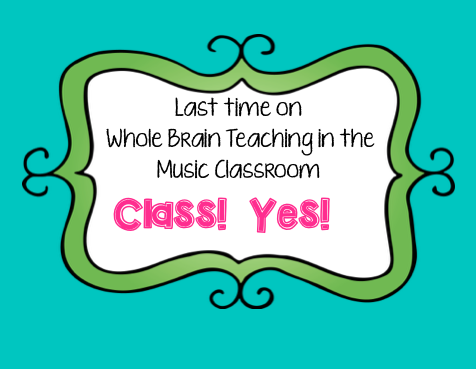I think anyone who has had any prolonged contact with children can say that a child's attention span is quite short. The movie UP! did such a great job of characterizing this in the dog Doug who *SQUIRREL* would get distracted from whatever he was *SQUIRREL* anytime he thought about, heard the word, saw some*SQUIRREL*thing.. You get the picture! Students, in my classroom at least, are very much like the dog, Doug, and get distracted by other students, things out the window, thoughts in their head, or even just the dirt on the floor.
Whole Brain Teaching is not a behavior plan, it's a teaching plan. The best part about it, though, is that the teaching plan is so appropriate for short attention spans that it addresses many behavioral issues at the same time! Like I said in the intro a few posts ago, I started looking into WBT as a quest to help a 1st grade class with behavioral issues. They were constantly chatting off topic, calling out to me and each other, and it felt like their attention was never on the musiking that I was trying to lead. (If you're unfamiliar with the term musiking, then you did not have Dr. Reynolds at Temple University...she made us put it into our Microsoft WORD dictionary at the start of class because any paper we wrote about better include how we would lead the musiking in our classes.)
The
teaching plan of mirror addresses my key concepts and the short
attention span of young learners. (Old learners too! Let's face it,
attention span does not automatically grow as we grow older!) Behavioral plans address the behavior primarily. I use a keyboard clip up to entice my students to behavior correctly and earn a fun music day. We have "How to Apologize" posters to teach students what goes into a heart-felt apology. There are rules and consequences and parent interaction emails all to help students behavior appropriately in the classroom. All of these things are great and necessary, but they are all only behavioral focused-nothing to do with the concepts I am trying to teach to fulfill my music curriculum.
Anytime I'm teaching a new concept or reviewing old ones, or simply talking about a concept, I use the same language and show gestures. Mirror! And students mirror the same language and gestures back to me. So simple! That trigger word *MIRROR* works just like *SQUIRREL* and anyone who might have been chatting to the neighbor realizes something is about to happen and snaps back to me.
 I think this is super easy to implement in the music classroom because we are such an imitative classroom. My students know "echo after me" or "my turn, your turn" and so transitioning to "mirror" was seamless (though sometimes out of habit, I use the word echo instead of mirror.) If we do imitation with pitch and rhythm and lyrics, why not continue imitation when we get to the decode and verbal association of concepts.
So when reminding my 3rd grade recorder students that a half note gets two beats, this was what was heard in the room:
I think this is super easy to implement in the music classroom because we are such an imitative classroom. My students know "echo after me" or "my turn, your turn" and so transitioning to "mirror" was seamless (though sometimes out of habit, I use the word echo instead of mirror.) If we do imitation with pitch and rhythm and lyrics, why not continue imitation when we get to the decode and verbal association of concepts.
So when reminding my 3rd grade recorder students that a half note gets two beats, this was what was heard in the room:
Teacher: Class class class!
Students: Yes Yes Yes!
Teacher: A half note gets two beats.
(gesture: make a half note with both hands, one hand open circle, the other hand stem. Pulse the half note twice then show two fingers pulsed and moving to show two beats)
Teacher: Mirror!
(gesture: two hands up, palms out)
Students: Mirror!
(gesture: two hands up, palms out)
Teacher: A half note (with gesture)
Students: A half note (with gesture)
Teacher: gets two beats (with gesture)
Students: gets two beats (with gesture)
Teacher: A half note gets two beats (with gesture)
Students: A half note gets two beats (with gesture)
We would then repeat a few more times, they'd teach each other, they'd use just gestures, etc. Music teachers are always great at varying an activity to keep it fun and different! When students line up to leave, we can mirror with gestures only, to review the concept and focus their attention from the craziness of moving from sitting spots to line up dots back to facing forward ready to leave and be musiking on the way out the door.
Here's a video at then end of a string family lesson in 1st grade. Students learned that the "Viola is the medium in the string family" and had just taught a partner using gestures. You'll also see our "class yes" when transitioning to a new activity and a "one second party" because we all did a good job with the transition. Of course I fell back into old habits using "echo" instead of "mirror" but you get the picture!
The key is repetition, but as music teachers, we know that. And we already know that hand motions are great for pitch recognition and learning lyrics, so let's keep extending what we know works into the areas of our teaching that are the hardest for students to handle-sitting still and keeping quiet.
Don't miss a post! Follow me on Facebook or subscribe to my blog via email!

%2B1.png)



.png)
































